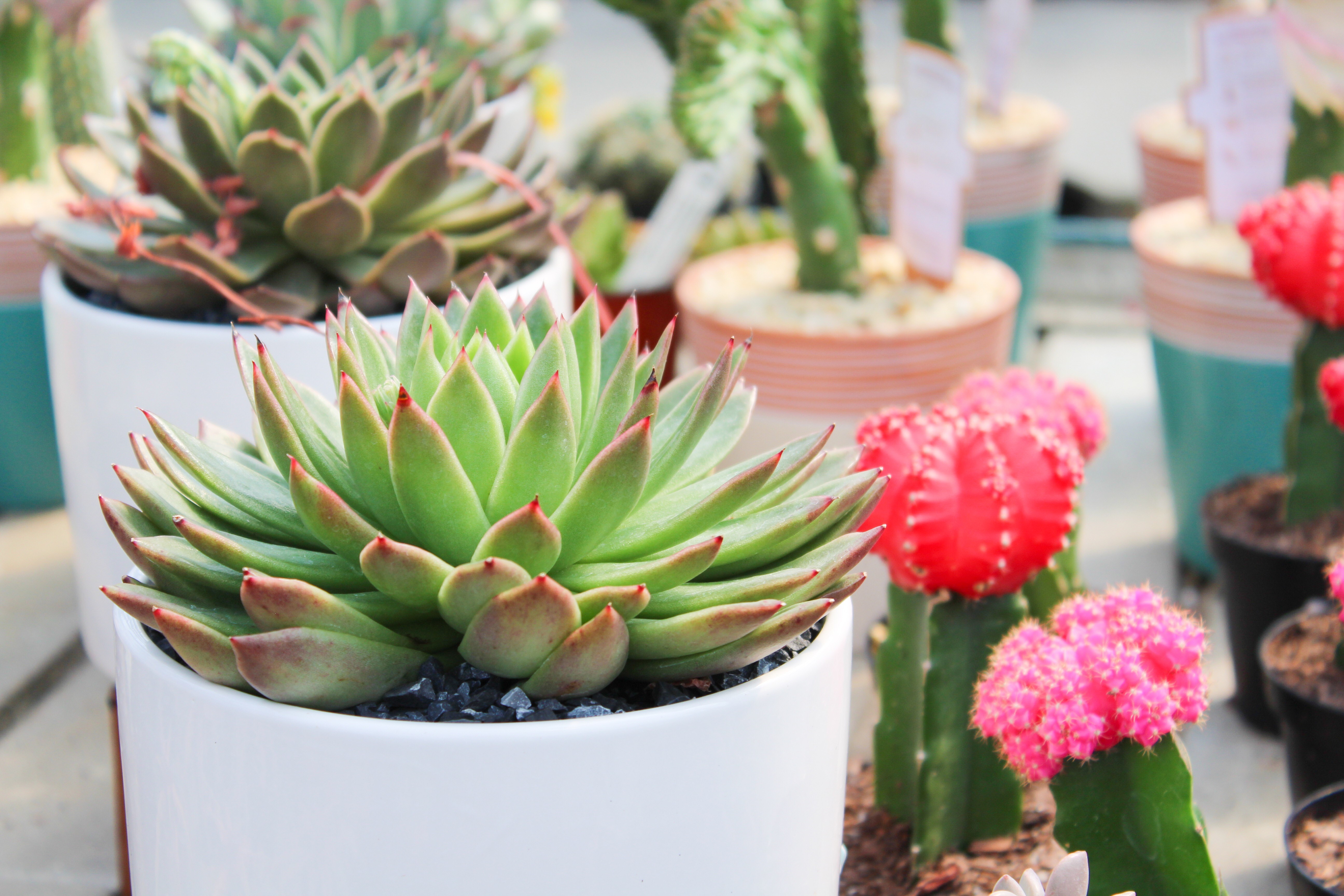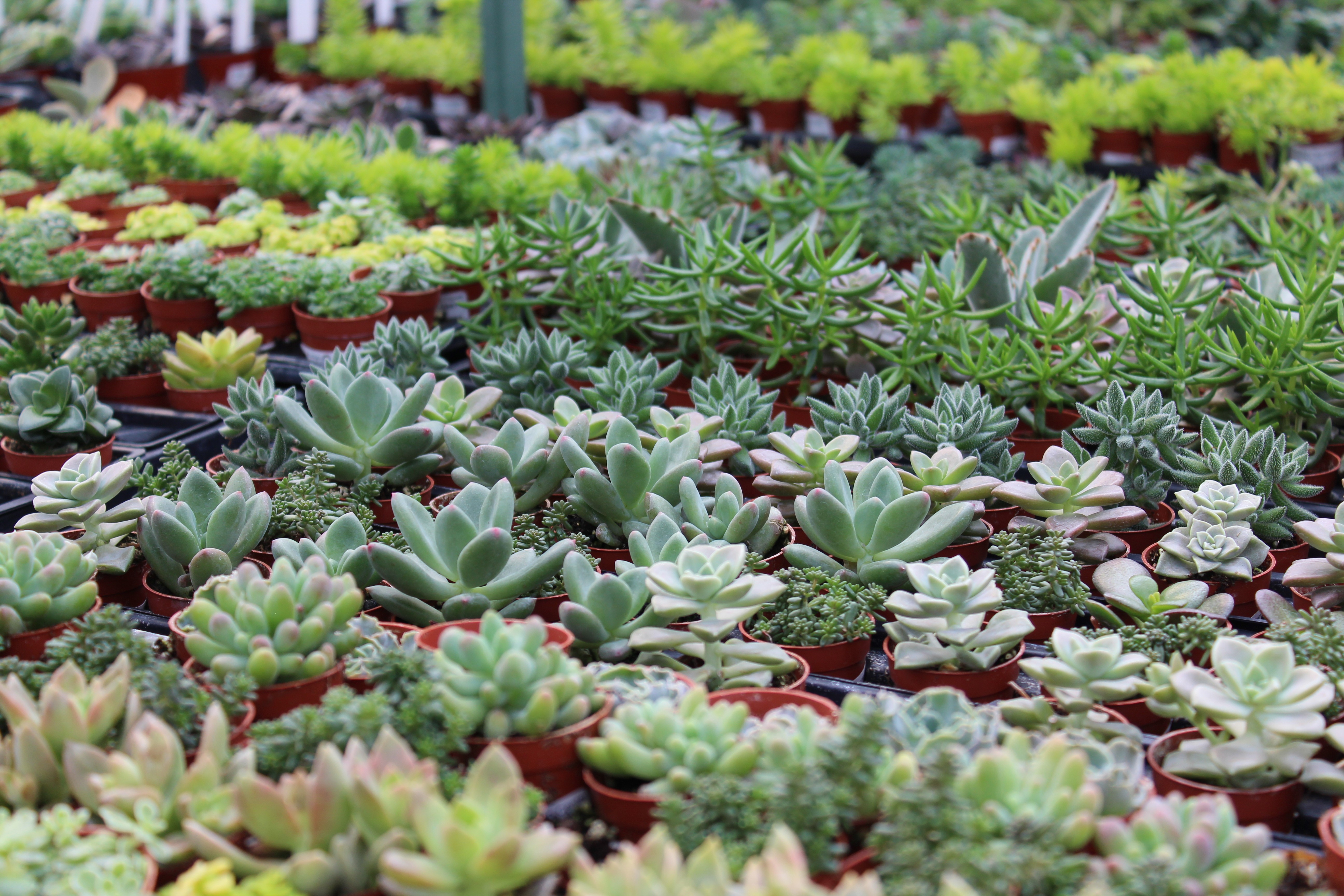Cacti & Succulents

Cactus & Succulent Care Made Simple
Cacti and succulents are often thought to be tricky, but they’re actually some of the easiest and most rewarding plants to grow.
The most common mistake? Too much attention. These water-storing plants thrive in conditions that would stress most houseplants.
Watering
Overwatering is the #1 cause of failure. Cacti and succulents prefer a soak-and-dry routine.
- Water thoroughly, then allow soil to dry out completely.
- Check moisture about 1 inch below the surface, not just the top layer.
- When in doubt, wait to water! Too much moisture leads to rot and disease.
Light
Bright light is essential, but direct sun and bright light are not the same.
- Most cacti and succulents do well on sunny windowsills or bright porches.
- Succulents generally prefer bright light without intense midday sun.
- Some varieties, such as haworthias and certain aloes, tolerate partial shade.
- Stretching indicates too little light; scorching means too much direct sun.
Temperature
These plants grow best in warm, bright conditions.
- Most species thrive between 40–95°F.
- Some cacti are winter hardy, but unless you’re certain, protect plants from freezing temperatures.

Air Circulation
Good airflow helps prevent pests and disease. Avoid crowded, stagnant conditions.
Fertilizing
Less is more.
- Use a low-nitrogen fertilizer at ¼–½ strength.
- Overfertilizing can cause weak growth or damage.
- Some succulents have different active growing seasons. Learn whether yours grows in winter or summer to improve results.
Soil
Proper drainage is critical.
- Standard potting soil is usually too rich and moisture-retentive.
- Use a fast-draining mix that allows air and water to move freely.
- Many growers use a blend of potting mix and pumice or similar grit.
- A gravel or crushed granite top dressing helps promote even moisture.
Pests
Common pests include mealybugs, scale and whiteflies.
- Treat promptly with appropriate insecticides.
- Always read and follow label instructions, as many products can be toxic.
With bright light, excellent drainage and infrequent watering, cacti and succulents will thrive with minimal effort!
